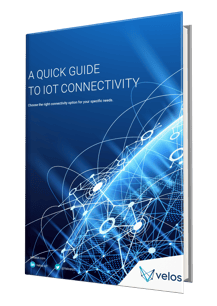

Is your IoT tank-level monitoring performing at its best?
Welcome to a new era where the Internet of Things (IoT) seamlessly merges the physical and digital realms. The connected smart devices, sensors, and systems has reshaped the way we interact with our surroundings. Its impact reaches far and wide, touching thousands of lives across the globe and changing how industries and businesses operate.
At the heart of this IoT revolution lies the principle of real-time impact. One of its most compelling applications, tank-level monitoring, exemplifies this concept. But before we dive into how IoT is impacting tank-level monitoring, let's first understand what tank-level monitoring is.
What is tank level monitoring?
Tank level monitoring is a pivotal technology that empowers businesses in different industries to track fluid levels in tanks. The fluid can be water, fuel, or chemicals.
What are the challenges in tank-level monitoring?
Efficient tank-level monitoring can help businesses reduce costs greatly. However, tank-level monitoring faces the below challenges:
- Late problem detection: It is difficult to track leakages due to malfunction or old infrastructure manually. This process usually costs not just time but also a waste of resources.
- Inaccurate Readings: Traditional monitoring methods may not provide accurate data due to manual errors or outdated technology.
- Limited Coverage: Remote locations or areas with poor network coverage can hinder data transmission and real-time monitoring.
- Inflexible capabilities: Adapting to changing needs and expanding monitoring capabilities can be challenging with some systems.
- Safety lapses: Without remote tank-level monitoring, staff need to climb tanks or enter confined spaces. This increased the risk of accidents and injuries.
- Growing environmental risks: Spills and leaks are higher with traditional tank-level monitoring systems, resulting in a greater environmental impact. With a growing concern for the environment.
However, tank monitoring systems have evolved over time. The modern tank-level monitoring system offers critical usage insights and early issue detection, fostering proactive maintenance and efficient problem-solving.
What is IoT-based tank-level monitoring?
IoT-based tank-level monitoring harnesses the power of IoT to track fluid levels in tanks accurately and efficiently. It deploys connected sensors and devices to gather real-time insights. And monitor tank-levels through remote monitoring, data analytics, and automated alerts.
This in turn improves operational efficiency, facilitates proactive maintenance, and ensures timely responses to prevent overflows or shortages. IoT-based tank-level monitoring represents a leap forward in optimising resource management and streamlining industrial processes.
To ensure your IoT tank-level monitoring performs optimally, consider the following factors:
- Sensor Selection: Choose reliable, accurate sensors suitable for your specific tank and liquid type.
- Network Coverage: Ensure strong and consistent network coverage, potentially using a single network connectivity supplier.
- Regular Maintenance: Schedule routine maintenance and calibration to keep sensors accurate and reliable.
- Scalability: Select a flexible IoT platform that can quickly scale as your monitoring needs grow.
How to maximise IoT tank-level monitoring performance?
A simple guide to implementing IoT-based tank-level monitoring for your enterprise
If you are considering to deploy IoT-based tank-level monitoring systems, here are a few factors to consider. You are just seven steps away from implementing an intelligent IoT-based tank-level monitoring system:
- Choose the Right Network Technology: Assess specific monitoring needs and choose the ideal network technology that suits your need. Such as NB-IoT, LoRa, Cellular, or Wi-Fi.
- Select Compatible IoT Sensors: Choose sensors that match your connectivity technology and provide accurate readings for stored liquids.
- Set Up the Communication Infrastructure: Install IoT gateways or communication hubs strategically, with stable power and internet connectivity.
- Implement Data Security Measures: Prioritise data security with encryption and authentication protocols for transmission and storage.
- Configure Remote Monitoring: Establish a centralised platform for real-time data collection, remote access, and control.
- Define Thresholds and Alerts: Establish critical tank level thresholds and configure automated alerts.
- Regular Maintenance and Calibration: Schedule routine maintenance and calibration to maintain sensor accuracy. You can use various analytics tools to generate reports and use these insights to optimise your infrastructure further.
Following these guidelines, you can create a robust IoT connectivity framework for tank-level monitoring. Which in turn can help you gather real-time, accurate data and enhancing operational efficiency.
Why to use IoT-based tank-level monitoring?
Inefficient systems can incur significant losses, impacting a business's future. To thrive, it's vital to embrace technological advancements that promise rapid returns on investment.
Industries and businesses that transitioned to IoT-based tank-level monitoring effectively tackled issues associated with traditional methods. IoT-based tank level monitoring empowers them with invaluable insights and control over liquid assets, ultimately leading to enhanced cost-efficiency.
Now, it's your turn to make the shift!
Is your tank-level monitoring performing at its best? Are you using IoT-enabled tank-level monitoring? If so, do you have the ideal IoT connectivity provider for your tank-level monitoring needs? Which network technologies do you have in mind?
Read our quick guide to IoT connectivity to gain more insights into efficiency tank-level monitoring.
Speak to a Velos IoT expert
Related articles


Exploring Cellular IoT Applications in Healthcare
In the rapidly evolving world of technology, the integration of the Internet of Things (IoT) in...

The 5 biggest challenges facing Remote Patient Monitoring
Remote patient monitoring (RPM) has the potential to transform patient care completely. If...
